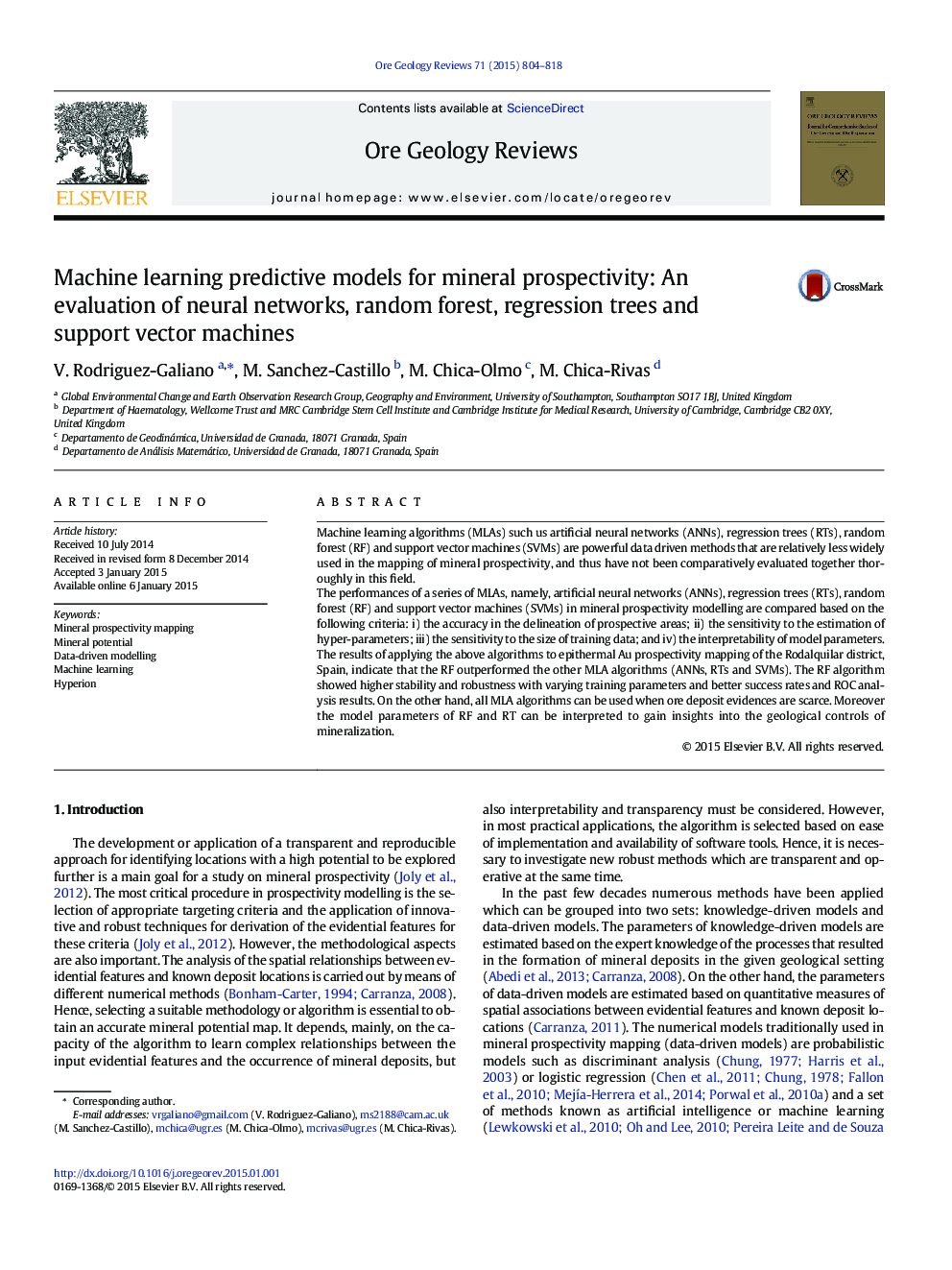| کد مقاله | کد نشریه | سال انتشار | مقاله انگلیسی | نسخه تمام متن |
|---|---|---|---|---|
| 4697052 | 1637233 | 2015 | 15 صفحه PDF | دانلود رایگان |
Machine learning algorithms (MLAs) such us artificial neural networks (ANNs), regression trees (RTs), random forest (RF) and support vector machines (SVMs) are powerful data driven methods that are relatively less widely used in the mapping of mineral prospectivity, and thus have not been comparatively evaluated together thoroughly in this field.The performances of a series of MLAs, namely, artificial neural networks (ANNs), regression trees (RTs), random forest (RF) and support vector machines (SVMs) in mineral prospectivity modelling are compared based on the following criteria: i) the accuracy in the delineation of prospective areas; ii) the sensitivity to the estimation of hyper-parameters; iii) the sensitivity to the size of training data; and iv) the interpretability of model parameters. The results of applying the above algorithms to epithermal Au prospectivity mapping of the Rodalquilar district, Spain, indicate that the RF outperformed the other MLA algorithms (ANNs, RTs and SVMs). The RF algorithm showed higher stability and robustness with varying training parameters and better success rates and ROC analysis results. On the other hand, all MLA algorithms can be used when ore deposit evidences are scarce. Moreover the model parameters of RF and RT can be interpreted to gain insights into the geological controls of mineralization.
Journal: Ore Geology Reviews - Volume 71, December 2015, Pages 804–818
